Before I get to talking about the specifics of the Pentax Spotmatic F, I want to take you back to 1979 when I was a teenager. My brother’s first son had just been born. Mum, Dad and I went to visit, as did my sister-in-law’s parents.
I was mad keen on everything photography and camera based at the time, pretty much to the exclusion of my studies. My sister-in-law’s father (David) was a successful professional photographer with a good reputation in commercial product circles. While the grandmothers were cooing over the new baby, I quizzed David about his gear.
“I have my 35mm camera case in the boot of the car if you’d like me to bring it in for you to see?” he offered.
I nodded vigourously – he disappeared for a few minutes and returned with an aluminium camera case. He opened it up to show the neatly arranged camera and lenses in their foam cut-outs, just as you might expect – but the camera itself surprised me.
It was an Asahi Pentax Spotmatic F. A highly respectable camera, but by this time twice superseded by the KX and then the MX in the Pentax roster and not even possessing a bayonet mount. This pro was shooting with kit less sophisticated than mine. I made a mental note to myself:
Pro photographers don’t need the latest kit – they just need something they can rely on.
“ Would you like to see my favourite lens?” David asked. I nodded again, expecting to see some exotic super-fast classic come out of the case.
Instead he pulled a non-descript lens out from its cutout, wrapped in a soft cloth. I’m not sure what focal length it was, because half the front of the lens appeared to be missing – instead, epoxied in its place was a plastic lens, such as you might get in a child’s detective set.
“This gives wonderful effects – clients love the soft and dreamy quality of the shots… I’ve taken some of my best shots with this lens”
I made a second mental note to myself:
A super sharp and expensive lens doesn’t necessarily give you the best photograph…
Unfortunately David is no longer with us (although I do have stewardship of an old Rolleiflex of his until one or other of his grandsons wants to take it on), but as a camera, the Pentax Spotmatic F will always remind me of him, and of those two valuable photographic lessons.
Vintage GAS
Back about 10 years ago, I started to pick up the dream cameras of my youth. I picked up a number of pre-Integrated-circuit manual exposure cameras from various manufacturers, including an early OM1, a number of SRT-101s and a few Pentax Spotmatics. A lot of these old cameras were crocked, but it was fascinating taking them apart and I even managed to revive a few.
One that worked like a charm from the start was my own Spotmatic F. Bought on ebay from someone local enough to pick it up from his place, it had a dinky little 28/3.5 SMC Takumar attached and worked like a charm. £16 was a bargain.
Pentax
To start with I’d like to say a word about Pentax. Pentax was the brand that Asahi Optical started to use for their eye-level 35mm reflexes. They actually acquired the name from the East German bit of Zeiss, who had trademarked the name, which was originally a merging of ‘Pentaprism’ and ‘Contax’. There seems to have been a good degree of collaboration with Zeiss, which led to Asahi using the m42 mount which had first appeared on the Contax S. Years later Zeiss would also collaborate on the development of the K mount.
A lot of pros used Pentax Spotmatics. They were great little cameras – a pleasure to use and reliable.
The cameras were marketed across most of the world as ‘Asahi Pentax’, but in the United States the cameras carried alternate engraving on the top-plates, identifying them as ‘Honeywell Pentax’ and carrying an ‘H’ badge on the pentaprism, in place of the ‘AOCo’ logo used elsewhere in the world.
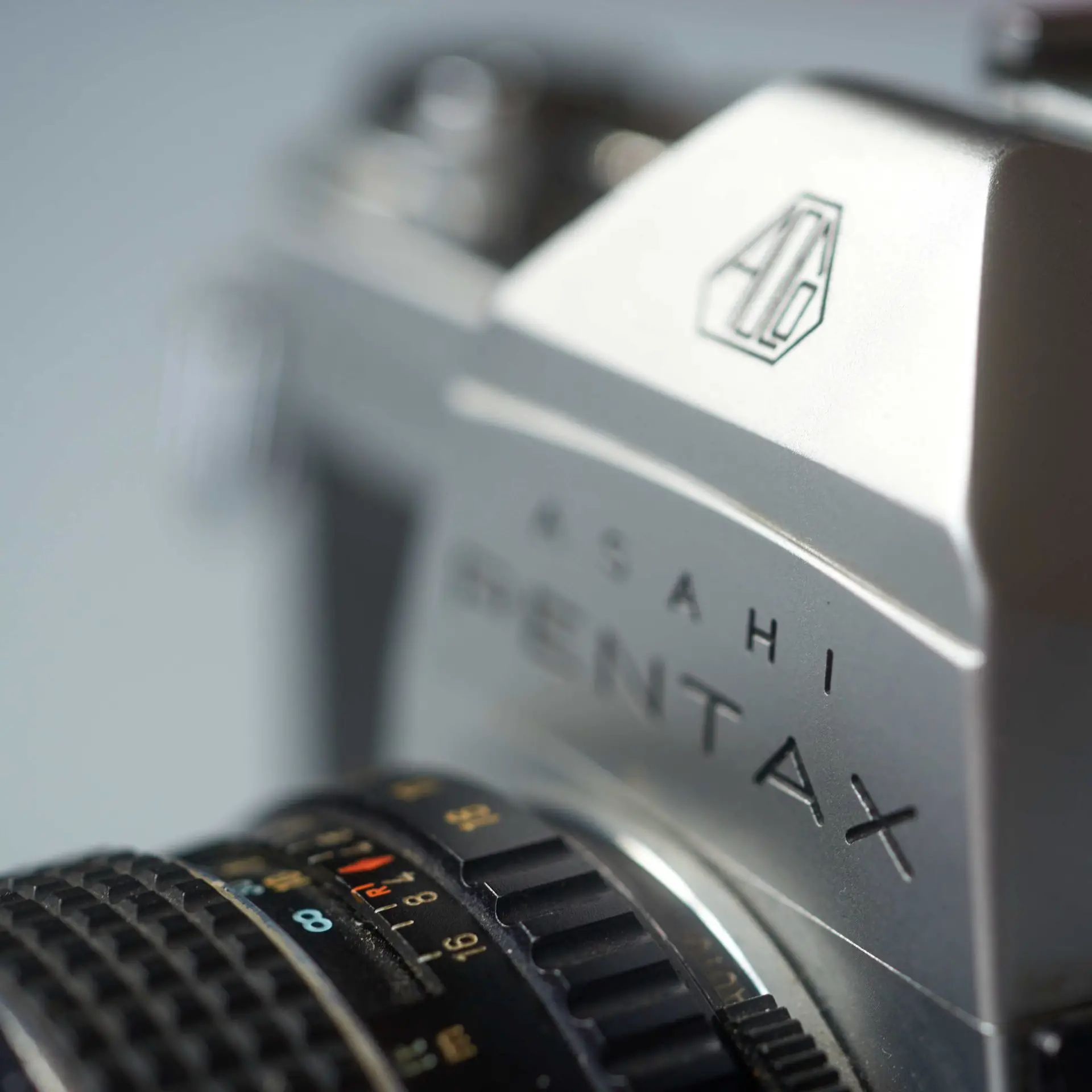
Takumar Lenses
Asahi’s lenses were branded ‘Takumar’. Takumar lenses earned themselves a decent reputation with high mechanical and optical standards and featuring excellent, class leading multi-coating. Unfortunately after switching to K mount and branding the main line of lenses as Pentax, Asahi cheapened the Takumar brand a little by giving it to a ‘budget’ range of lenses – but m42 Takumars are generally objects of desire.
There are two distinct lines of Takumars from those m42 days. All are high quality, but the cheaper range aims for compactness and relatively modest speeds. In times when f2.8 primes were common, Pentax had some wonderful diminutive f/3.5s. But if you wanted fast over small, you could get a faster-than-normal f/2.5 135 prime, plus some Thorium glass super-fast standards. The range was all there, with one of the largest varieties of standard lens focal lengths from any manufacturer.
Mechanical quality in those Takumars is excellent. Even 50 years on, focusing movements are buttery smooth: they are a pleasure to use.
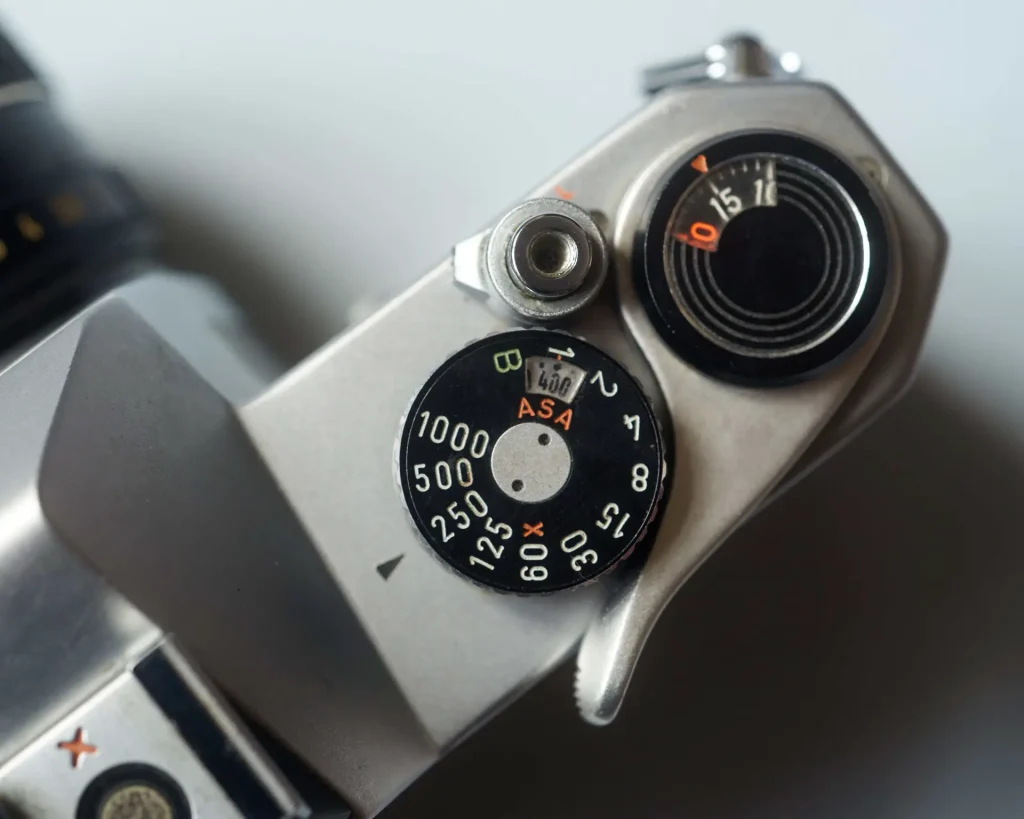
A little ‘Spottie’ History
The Spotmatic prototype was first shown at Photokina in 1960 – It was innovative in offering TTL (through the lens) spot metering. However, by the time it actually made the market in 1964, it was not the first camera to offer TTL metering and, although they kept the ‘Spotmatic’ name from the prototype, it didn’t feature a spot-meter, judging exposure instead by averaging across the field of view with a bias towards the centre of the frame.
The Spotmatics have elegance and class. There is an Art-Deco quality to the pentaprism front that reminds me of the Chrysler Building in Manhattan. The film wind-on lever has no plastic tip, instead it is a wonderfully contoured, organic form, which manages in cast aluminium to be wonderfully comfortable to use, while the self-timer lever is almost sculptural. Even the typeface used for the body engraving was elegant.
The original Spotmatic had a ‘pointy’ pentaprism, without a fixed shoe. Budget models (the SP 500 and SP 1000) forsook the self timer. The Spotmatic II, added a hot shoe and a more sqauared-off pentaprism to the top model. The innovation of an electronic shutter along with lenses that were able to transmit aperture information to the camera body allowed two models, the ES (Electro Spotmatic) and ES II, with aperture priority automatic exposure.
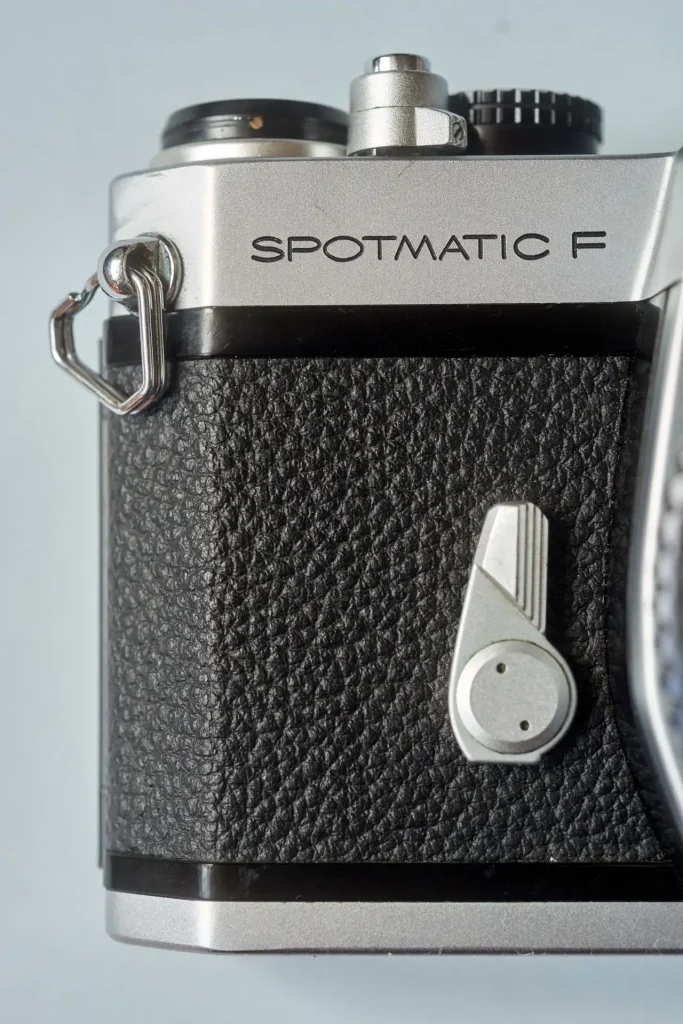
The Pentax Spotmatic F
The Pentax Spotmatic F (or SP F as is engraved on the top surface of the top-plate) was the last of the Spotmatics to be introduced. It came out in 1973, and just two years later the whole Spotmatic line would be superseded by a new range of K bayonet-mount cameras.
The camera itself is fully mechanical apart from the meter and is quite basic. It will meter wide open with SMC Takumar lenses – these have two tabs inside the mount – one is fixed and lets the camera tell how far the lens has screwed onto the thread – the other moves with the aperture ring – its position relative to the fixed tab tells the camera what the aperture setting is. This is a clever solution to a tricky problem if you want to use a screw mount for open aperture metering, but not a problem you encounter with a bayonet.
The Pentax Spotmatic F viewfinder is very spartan. You get a microprism to aid focusing and a meter needle to centre on the right. You don’t see shutter speeds or apertures (one of the advantages of the K mount was that Pentax could use what Nikon refer to as an ‘Aperture Direct Window’ to see, in the viewfinder, the aperture set on the lens through a set of prisms – the KX, which effectively replaced the SP F, added this feature, while the K1000 was effectively the same spec as the SP F but without the self-timer or depth of field preview).
The Pentax Spotmatic F retains the stop-down switch on the left of the lens mount for depth of field preview and for compatibility with earlier Takumars or third party lenses.
Body layout is very conventional: It has a shutter speed dial on the right top-plate for speeds from 1 second to 1/1000 plus B, with X synch at 1/60 (fairly normal for cloth horizontal-run shutters) – a conventional hot-shoe sits atop the pentaprism. The ASA range is from 20 to 3200 (DIN is not displayed).
Also on the right side of the Pentax Spotmatic F top plate is the shutter release with a lock surrounding it, and, just beside it a small window that indicates whether the shutter is cocked or not. The wind-on lever is capable of being operated with either a single stroke or a number of shorter movements. The frame counter sits inside the hub of the wind-on lever.
On the left of the top plate is the rewind crank, which releases the back when pulled up. This is surrounded by a (purely informational) dial that allows you to set a reminder of the film type and length you have loaded.
On the front of the Pentax Spotmatic F you have the self-timer, which you operate by pulling down to the side and then pressing the little button that is revealed. Flash sockets for FP and X synch are over on the opposite side of the front.
Underneath you have a centrally placed tripod thread, a broad rewind button (with red dot to show film travel back into the cassette – stop rewinding as soon as it stops rotating and the leader will be left out of the cassette), and a battery chamber.
The Pentax Spotmatic F uses a bigger battery than some of the earlier Spotmatics. There is some debate about whether the ‘F’ has the same voltage bridge circuitry as earlier Spotmatics. Since the original version of this review was published I’ve seen a repair manual for the Spotmatic F meter through a post on the PentaxUser forum, which suggests that the bridge curcuitry is present in the SP-F, K1000 and KM. Debate will, no doubt, continue. The bridge circuitry allows Spotmatics to take 1.5v silver oxide batteries without needing to recalibrate, so if you can fit a battery in the camera of 1.35v or higher, the meter should work. If in doubt, check the exposure, or use 1.35v Zinc-air batteries.
Pentax Spotmatic F Issues
The stop-down switch on the side of the mount can be a weakness on Spotmatics (it is one control that gets a lot of use) – if you are buying one used try to make sure it moves well and clicks easily into place.
While earlier Spotmatics only turned the meter on when the stop-down switch was in the upper position, and turned it off as soon as a shot was taken, the Pentax Spotmatic F needs to have the meter on when the lens is opened up – for this reason the battery will drain unless you keep the lens cap on – so it is much easier to accidentally drain the batteries of an SP F (this may also be why the SP F was given a bigger battery than earlier Spotmatics).
The shots
A little context here, I am blessed with a good excuse for travelling – even in times of lockdown – I’m a volunteer transplant courier, carrying stem cells around the UK (and beyond when travel restrictions permit) – these are a few shots I took with The SPF on trips to Shefield, Heathrow and Bristol…

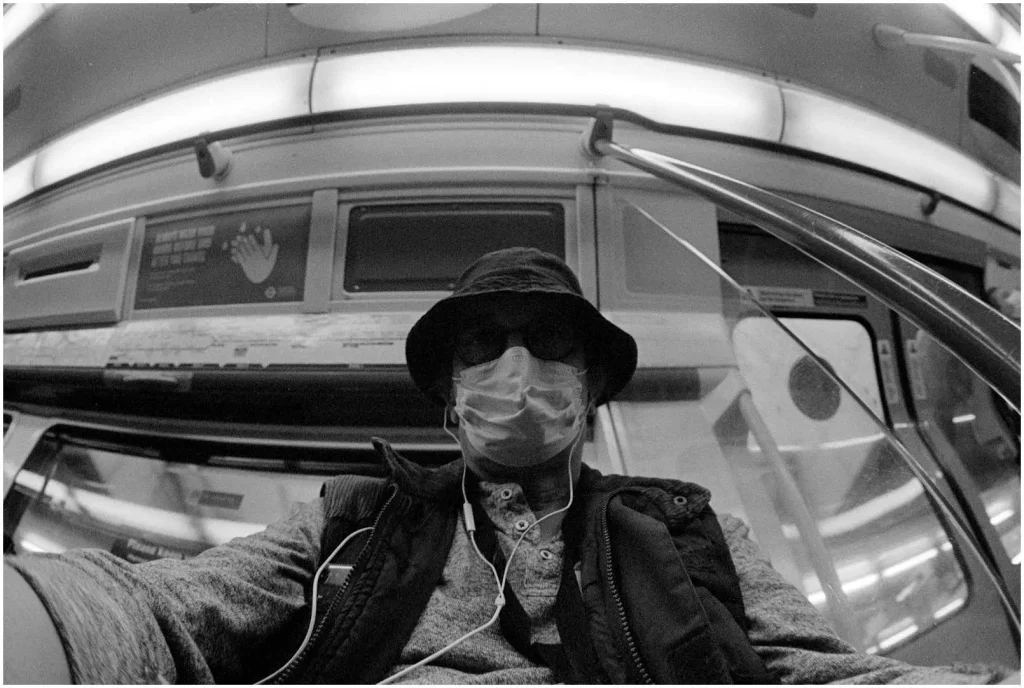
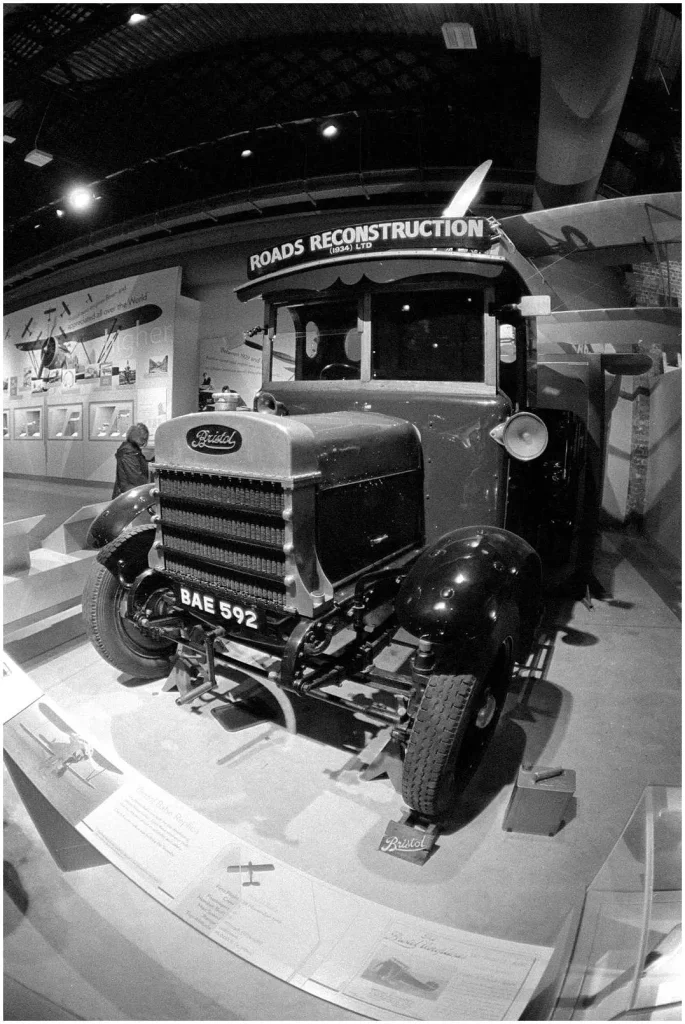
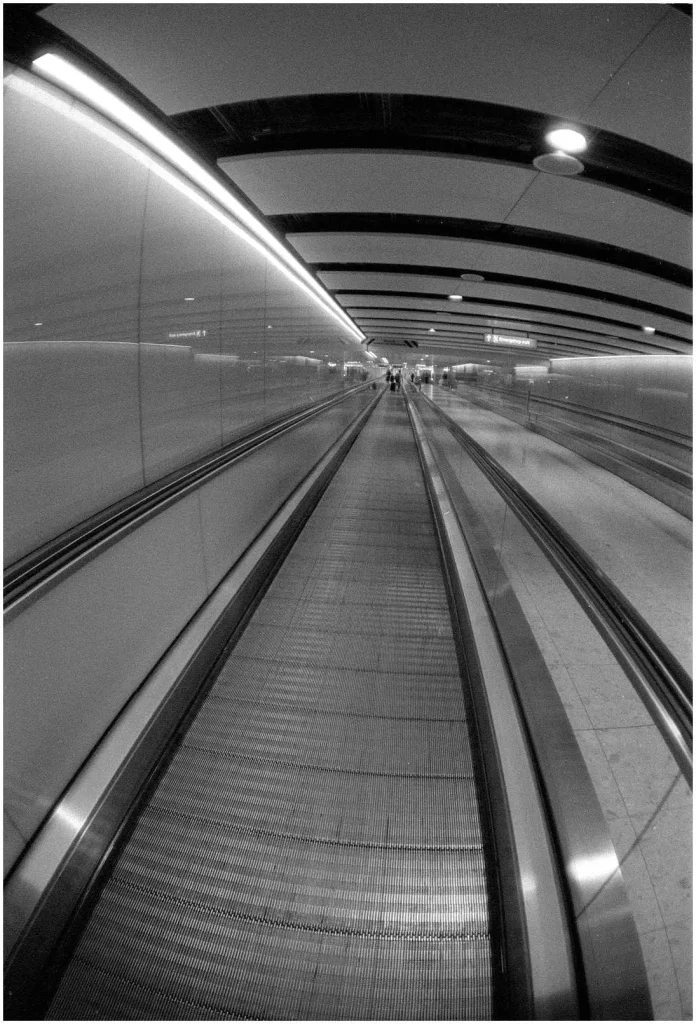
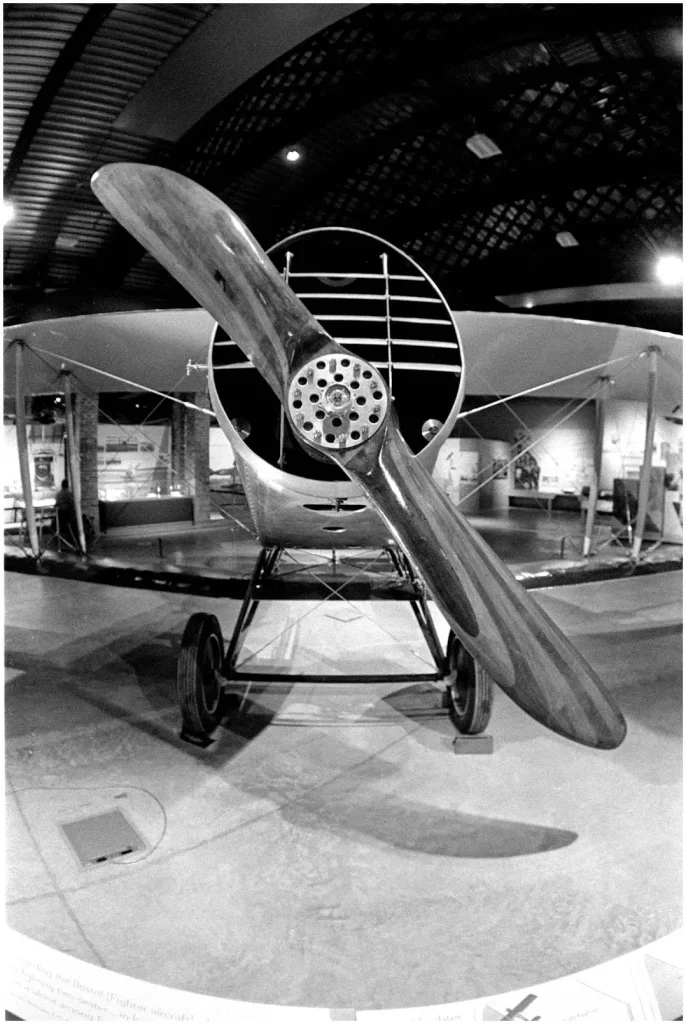
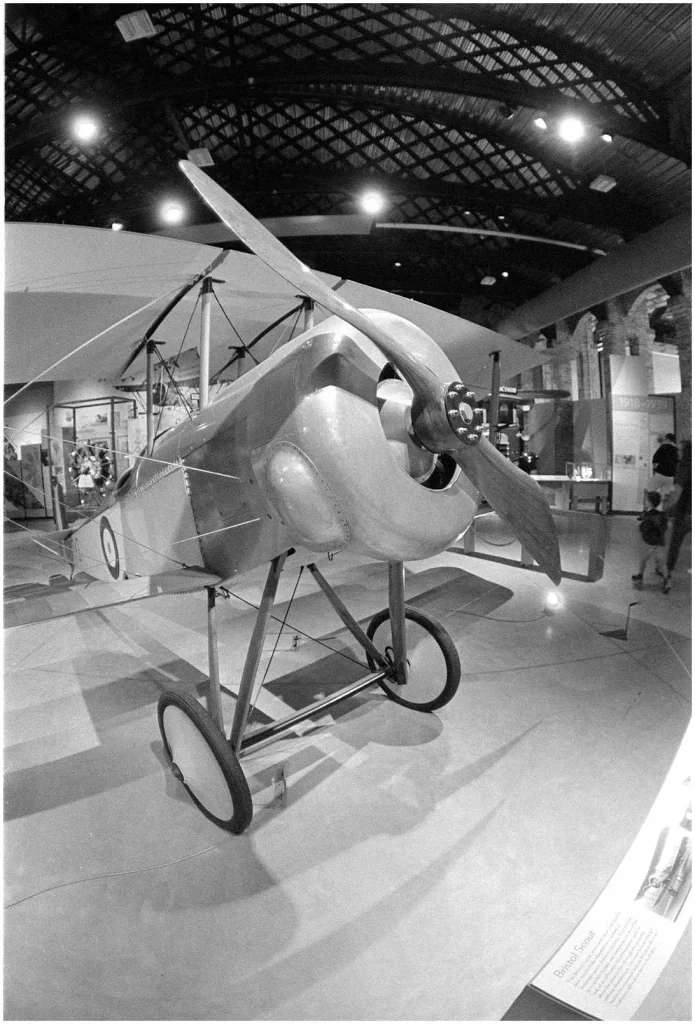

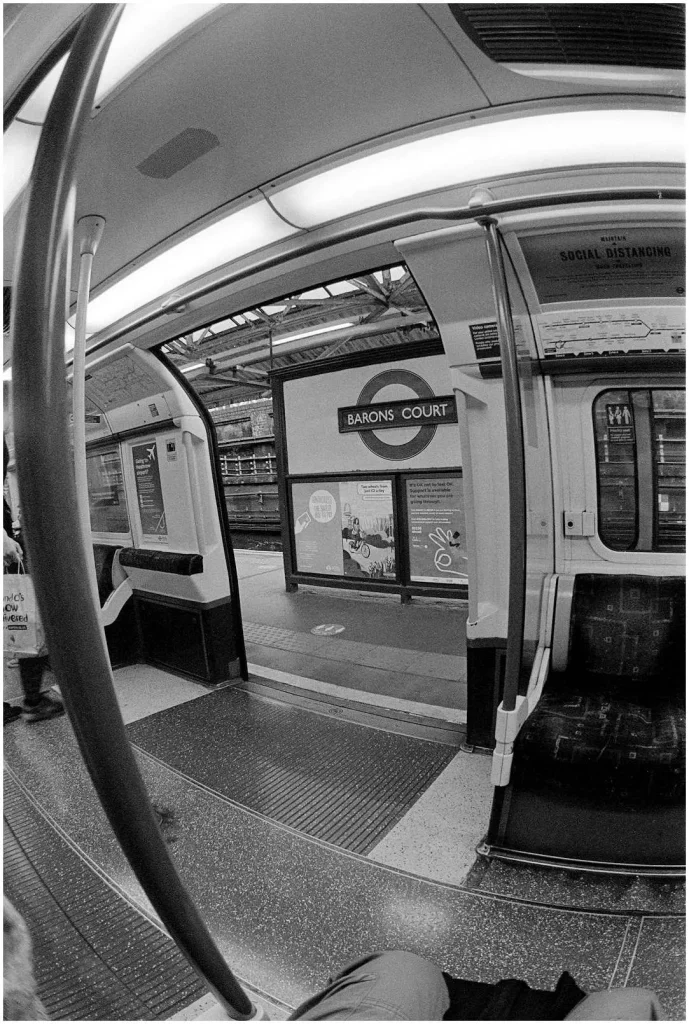

Summing up
Recently I’ve been running a lot of B&W film through cameras. The other day I was debating whether to just slip the little XA2 into my pocket for a trip, or to pack the Contax G1. Then I started to fiddle with the Pentax Spotmatic F, which had been sitting against the skirting board in the lounge for a while. I hadn’t had a film in for some years. I screwed one of my little Zenitar Fish-eyes on it and was amazed at how good it felt. It earned a fresh roll of film almost immediately. Having taken it on the trip I can’t think why I’m not shooting with this camera all the time.
As a camera, the Pentax Spotmatic F is not dripping with controls and features, but it is a fantastic little picture-taking machine that does pretty much everything in an elegant and stripped-down manner. At the end of the day character matters.
I just wish I could remember where I put that 28mm f/3.5 SMC Takumar…
More of my reviews can be found here.
Share this post:
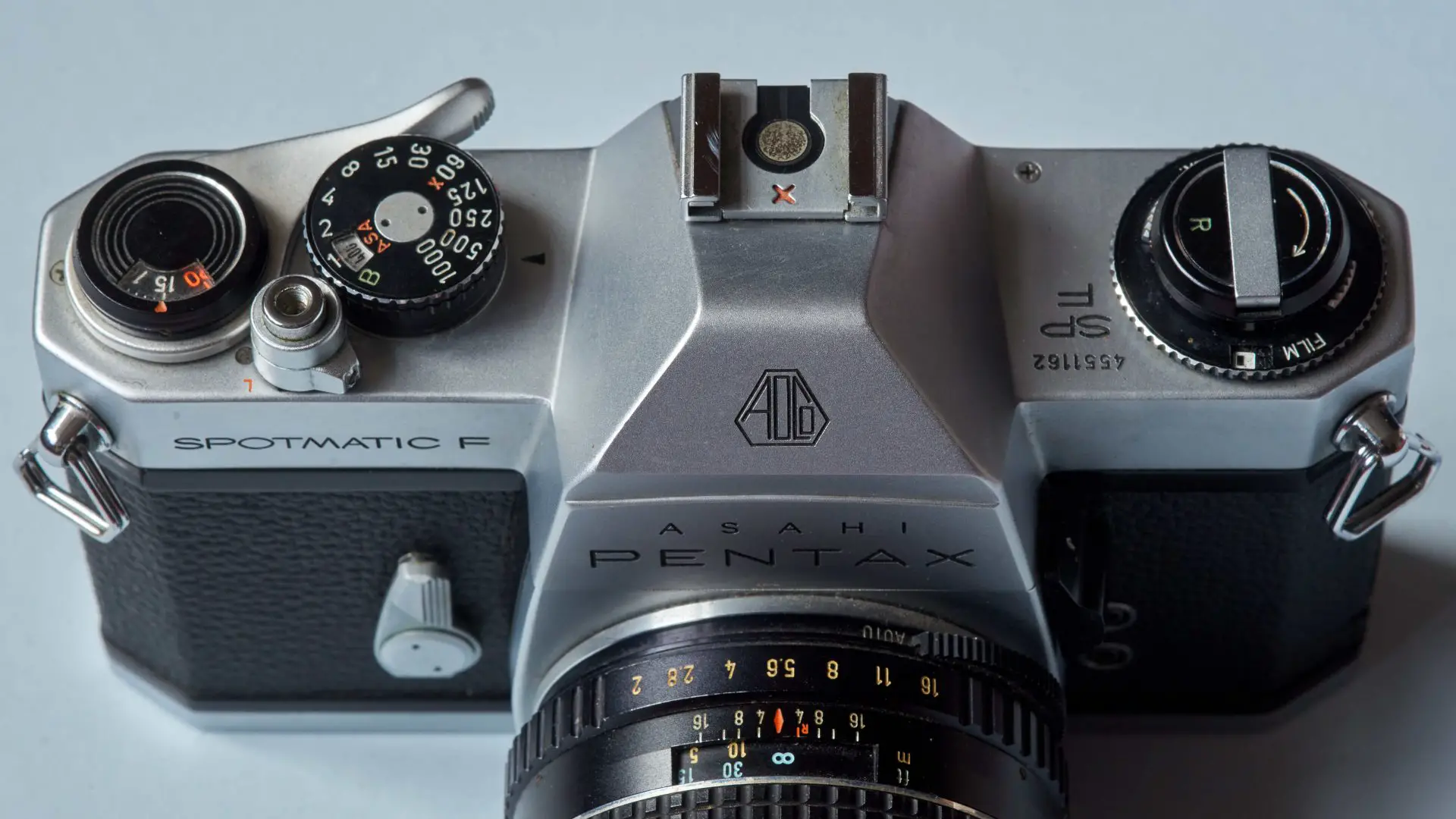
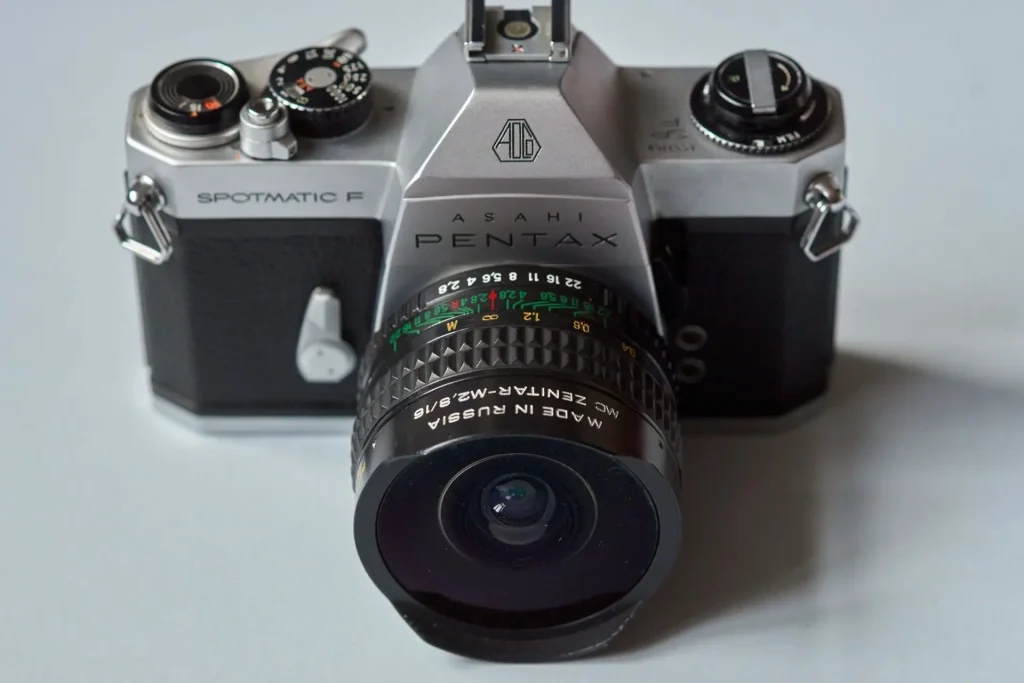








Comments
Karen on Asahi Pentax Spotmatic F Review – A Class Act – By Bob Janes
Comment posted: 14/09/2020
Graham Coad. on Asahi Pentax Spotmatic F Review – A Class Act – By Bob Janes
Comment posted: 14/09/2020
I lusted after, and was saving up for the Spotmatic F when Pentax changed to the Bayonet mount, so I ended up with the KM as my first Pentax.
Comment posted: 14/09/2020
john g on Asahi Pentax Spotmatic F Review – A Class Act – By Bob Janes
Comment posted: 14/09/2020
Comment posted: 14/09/2020
Comment posted: 14/09/2020
Murray Kriner on Asahi Pentax Spotmatic F Review – A Class Act – By Bob Janes
Comment posted: 14/09/2020
Wim van Heugten on Asahi Pentax Spotmatic F Review – A Class Act – By Bob Janes
Comment posted: 14/09/2020
That said: I love your article!
Comment posted: 14/09/2020
Peter on Asahi Pentax Spotmatic F Review – A Class Act – By Bob Janes
Comment posted: 14/09/2020
Wim van Heugten on Asahi Pentax Spotmatic F Review – A Class Act – By Bob Janes
Comment posted: 14/09/2020
For the SP soluitions are putting a Schotky diode in, or using a Weincell.
Metering will not be hugely off with 1.5 Volts, but I prefer to avoid error sourdes.
Comment posted: 14/09/2020
Castelli Daniel on Asahi Pentax Spotmatic F Review – A Class Act – By Bob Janes
Comment posted: 14/09/2020
I transitioned to a Nikon F as I entered college but the Pentax was always special. The Nikon was Jeep, the Pentax was an MG.
Good shots! Thank you for the critical work you do.
Gene Wilson on Asahi Pentax Spotmatic F Review – A Class Act – By Bob Janes
Comment posted: 15/09/2020
Film Fridays: Asahi Pentax Spotmatic F Review – a class act: Digital Photography Review – XIcamera on Asahi Pentax Spotmatic F Review – A Class Act – By Bob Janes
Comment posted: 02/10/2020
Kevin Campbell on Asahi Pentax Spotmatic F Review – A Class Act – By Bob Janes
Comment posted: 02/10/2020
Film Fridays: Asahi Pentax Spotmatic F Review – a class act: Digital Photography Review – Relent Less Lynn on Asahi Pentax Spotmatic F Review – A Class Act – By Bob Janes
Comment posted: 02/10/2020
Andrew Skinner on Asahi Pentax Spotmatic F Review – A Class Act – By Bob Janes
Comment posted: 02/10/2020
Film Fridays: Asahi Pentax Spotmatic F Review – a class act: Digital Photography Review – Ash Store.Shop on Asahi Pentax Spotmatic F Review – A Class Act – By Bob Janes
Comment posted: 02/10/2020
Wally Beagley on Asahi Pentax Spotmatic F Review – A Class Act – By Bob Janes
Comment posted: 03/10/2020
I spent almost all the wages from my first summer job (at a camera store) on an H3v (The last un-metered Pentax model). This was my primary camera for almost 20 years. I didn't upgrade because Pentax changed the lens mount and I couldn't afford to buy all new glass. In the 80s, I was seduced by the specs of the Nikon FE2, but never got totally comfortable with it. When autofocus came in, I didn't like the heavy, klunky Nikons, so went back to Pentax with a ZX5n (still my favorite Pentax.) It is the only camera I know that has exposure modes, but doesn't slow you down by making you use a dial or switch to change modes. To change from program mode to aperture preferred, you just move the aperture setting on the lens from the auto setting to the aperture you want. Same with the shutter. If you set both an F and a speed, you are in full manual. Someone should have won an award for this. I have since acquired a digital Pentax as well as an old Mx and a Spotmatic F. They all still work (except for the Spormatic meter.)
Film Fridays: Asahi Pentax Spotmatic F Review – a class act | World Best News on Asahi Pentax Spotmatic F Review – A Class Act – By Bob Janes
Comment posted: 03/10/2020
Movie Fridays: Asahi Pentax Spotmatic F Overview – a category act: Digital Pictures Overview | GREAT NEWS on Asahi Pentax Spotmatic F Review – A Class Act – By Bob Janes
Comment posted: 04/10/2020
Stuart Watson on Asahi Pentax Spotmatic F Review – A Class Act – By Bob Janes
Comment posted: 04/10/2020
sergio rodrigues moreira on Asahi Pentax Spotmatic F Review – A Class Act – By Bob Janes
Comment posted: 04/10/2020
https://www.butkus.org/chinon/miranda/miranda_ee/miranda_auto_sensorex_ee.pdfhttps://www.butkus.org/chinon/miranda/miranda_ee/miranda_auto_sensorex_ee.pdf
ww floyd on Asahi Pentax Spotmatic F Review – A Class Act – By Bob Janes
Comment posted: 06/10/2020
That was not my memory. I've always found it a bother that the SP F light meter is on ALL THE TIME, with SMC lenses. I have run down a few batteries, as a consequence. So, I hoped you were right, but, verified with my SP F, and with the instruction manual, that you were in error. Manual says: "When not actually measuring light, be sure that the lens is covered at all times. Leaving the lens cap off for an extended period of time will exhaust the mercury battery."
wwfloyd on Asahi Pentax Spotmatic F Review – A Class Act – By Bob Janes
Comment posted: 07/10/2020
Hey, you had me going there, with this: "... for this reason the meter switches on as soon as you unlock the shutter release..."
That was not my memory. I've always found it a bother that the SP F light meter is on ALL THE TIME, with SMC lenses. I have run down a few batteries, as a consequence. So, I hoped you were right, but, verified with my SP F, and with the instruction manual, that you were in error. Manual says: "When not actually measuring light, be sure that the lens is covered at all times. Leaving the lens cap off for an extended period of time will exhaust the mercury battery."
Comment posted: 07/10/2020
wwfloyd on Asahi Pentax Spotmatic F Review – A Class Act – By Bob Janes
Comment posted: 07/10/2020
Rachael Tyrell on Asahi Pentax Spotmatic F Review – A Class Act – By Bob Janes
Comment posted: 16/10/2020
Perfect now that Kodak have reintroduced Ektachrome reversal film again.
The little camera is over 50 years old and with it's Super Takumar lens still turns out stunning photos. And it has the most satisfying film advance I have ever used!
The meter works perfectly (just make sure you use a 1.35V battery). The reading is always pretty much spot on and in accordance with the vintage handheld light meter I use.
I love it.
Filmstagram: How Instagram has bought a new audience to film photography - Kosmo Foto on Asahi Pentax Spotmatic F Review – A Class Act – By Bob Janes
Comment posted: 28/10/2020
Allen Humphries on Asahi Pentax Spotmatic F Review – A Class Act – By Bob Janes
Comment posted: 18/12/2020
Allen Humphries on Asahi Pentax Spotmatic F Review – A Class Act – By Bob Janes
Comment posted: 18/12/2020
IOAN CIUREA on Asahi Pentax Spotmatic F Review – A Class Act – By Bob Janes
Comment posted: 21/12/2020
Mike on Asahi Pentax Spotmatic F Review – A Class Act – By Bob Janes
Comment posted: 23/04/2022
Comment posted: 23/04/2022
Umzugsfirma on Asahi Pentax Spotmatic F Review – A Class Act – By Bob Janes
Comment posted: 01/06/2023